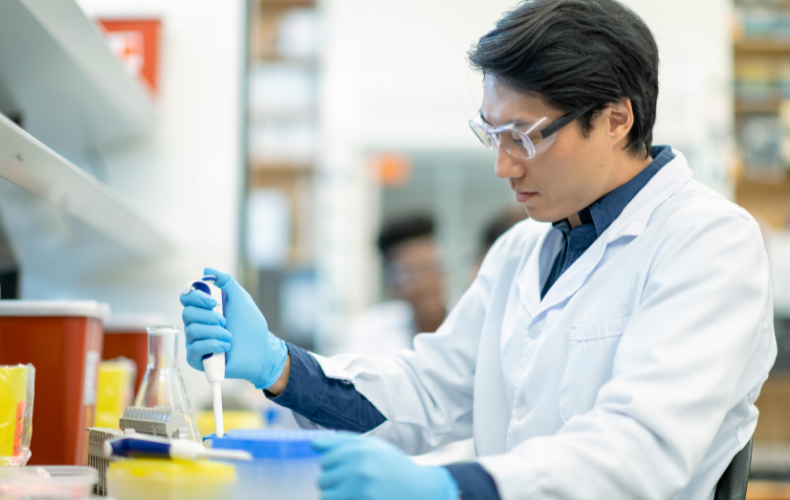
In this article, we are going to share some placenta stem cell transplant success stories – using the cells from chorionic villi and amniotic membrance of the placenta. These stories highlight the therapeutic value of the placenta and the many ways in which it can be used to treat people suffering from injuries or disease.
The chorionic villi and amniotic membrane found in the placenta has been proven to be a valuable medical resource that can treat burns, wounds, and ulcers. But there are also several research projects and clinical trials which suggest that the placenta may be used to treat many other conditions in the future. In this post, we are going to share some of the placenta stem cell transplant success stories.
Current Treatment Success Stories
Thousands of successful medical procedures are performed each year using placental tissue. Most of these treatments use the inner layer of the placenta, called the amnion. Some of the conditions treatable using the amnion include:
Burns
Medical researchers first discovered the extraordinary regenerative capacity of the placenta early in the 20th century. That’s when they realised the amnion membrane could be used to speed up the healing process of burn injuries. Since then, thousands of patients have recovered from their burns more rapidly thanks to the application of amnion tissue.
A 2016 study confirmed the effectiveness of the amnion for treating burns. The study found that patients who had a dressing containing amnion cells experienced faster wound healing and less pain. They also has improved mobility in the area where the burn was located.
Ulcers
The capacity of the amnion to speed up the health process also helps people recovery from ulcers. Thousands of patients have received dressings containing amniotic membrane to speed up the healing process.
A 2017 study confirmed the healing properties of the amniotic membrane for treating ulcers. It found that the presence of amnion tissue near open ulcers induces epithelialisation, which is the process the body uses to replace skin cells in a wound. The amnion has also been found to be effective at healing diabetic ulcers.
Skin Grafts
The reason why the amniotic membrane is so effective at healing wounds is the powerful cytokines and growth factors it contains. These components support wound healing and reduce pain when applied to a wound. They also help patients heal after they have received skin grafts.
Research Success Stories
In addition to the current treatments using placental tissue, there are dozens of research success stories which demonstrate the therapeutic potential of placental tissue and cells. Many of these research project success stories focus on the use of stem cells contained within the placenta. Here are a few of the highlights:
Cardiovascular Disease
A recent study published in the Journal of Cardiothoracic Surgery indicates that an injection of amnion cells may be useful for treating cardiovascular defects. Patches of amniotic membrane may also be useful for treating patients with inflammatory cardiovascular conditions.
A seperate study found that stem cells taken from the chorionic villi (the placenta’s outer layer) could be useful for cardiovascular tissue engineering. Scientists may be able to use these cells to engineer heart valves, blood vessels, and other cardiovascular components.
Type 2 Diabetes
A 2016 study found that an injection of placenta tissue-derived cells could improve glycemic control in patients with diabetes. This finding may eventually lead to a cure for diabetes.
Another group of researchers discovered that stem cells from the placenta’s chorionic villi can also be helpful for treating type 2 diabetes. These cells have been found to increase insulin levels to such an extent that several test subjects could reduce their insulin medication levels.
Dry Eye
Researchers have found that the amnion may have the capacity to treat everyday conditions like dry eye. One study involving 90 test subjects found that 88% experienced an improvement in their symptoms after using eye drops containing amnion cells.
Ischaemic stroke and acute brain injuries
Stroke is a very common condition that affects millions of people around the world each year. Researchers believe that placental stem cells may help them create a better treatment for people recovering from a stroke.
One study found that placental stem cells can regenerate brain tissue, reversing the damage caused by a stroke. Another study found that placenta stem cells can reprogram inflammatory responses, which can reduce the level of brain damage caused by acute brain injuries.
Osteoarthritis
Osteoarthritis is a debilitating disease that affects the cartilage between bones. A recent Chinese study found that a transfusion of placenta stem cells may be able to reduce reduce inflammation, stiffness, and pain associated with this condition.
For more information on placenta banking, please contact Cells4Life on +971 4 3116613.
Read Previous Posts:
Expecting Parents Guide to Placenta Banking
Placental Cells: Benefits and Future Uses
Placenta Banking: How Does It Work?


